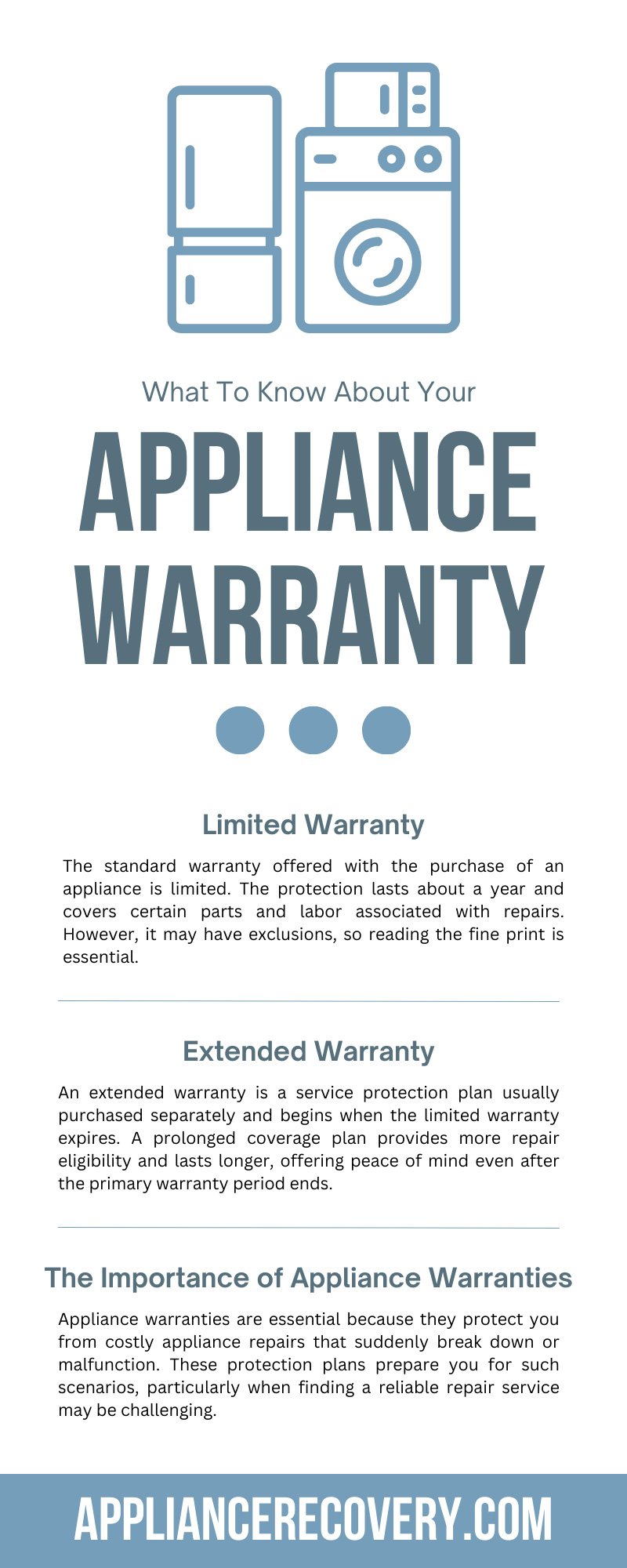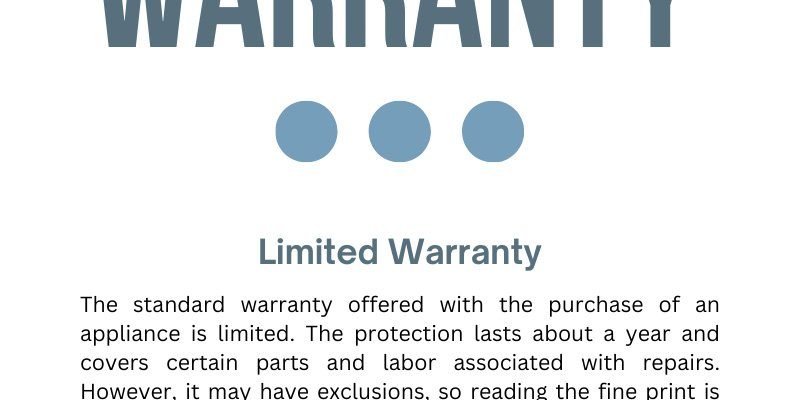
Let me explain it this way: Treat your LG washer or dryer’s warranty like a trust fund from a slightly strict aunt. She’s incredibly generous, but she has rules. Miss a step, improvise where you shouldn’t, or ignore the instructions, and—poof—the safety net vanishes. LG’s warranty terms may look complex, but you don’t have to be a lawyer or a technophile to follow them. You just need to know the main pitfalls and how to sidestep them.
Understand What the LG Laundry Warranty Actually Covers
You might be wondering, “What *does* my LG laundry appliance warranty really cover?” Honestly, that’s the best place to start. LG offers different levels of coverage, depending on whether you bought a washer, a dryer, a combo unit, or a stacked system. Typically, the standard warranty covers defects in materials or manufacturing for one year—sometimes more for specific parts like the motor or drum.
But here’s the catch: the warranty doesn’t cover *everything*. It usually won’t protect against normal wear and tear, accidents, misuse, or problems caused by non-LG parts. Think of it more as an insurance policy against things *LG* did wrong, not things that happen from daily life or creative “DIY” repairs. Before you even plug in your new appliance, open up the warranty packet (or check online) and read the fine print. It’s not exactly beach reading, but it’s the only way to know where you stand.
It’s also smart to save your proof of purchase and warranty registration info. LG *does* ask for those if you ever need to use your warranty. Keeping your original receipt in a safe spot—maybe the same place you keep appliance codes or troubleshooting notes—is a simple way to make future headaches disappear before they start.
Only Use LG-Approved Parts and Accessories
Let’s be honest: The lure of cheap, generic replacement parts is strong, especially when your dryer belt suddenly gives up on laundry day. But here’s the big red flag—the moment you use a non-LG belt, hose, or electronic part, you risk sending your warranty straight to the void pile.
LG’s warranty terms are pretty clear about this. If a non-LG part damages your washer or dryer, even indirectly, the warranty won’t cover the repairs. So if you swap in a third-party pump and it leaks, frying the control board, you’re on your own. It’s a little like putting diesel into a gas engine—sure, it might run for a while, but any problems are now yours to handle.
Stick with genuine LG parts, and make sure any installation follows their instructions to the letter. If you’re not confident with a repair, it’s always safer (and often cheaper in the long run) to call LG’s authorized service for help. Not only does this keep your warranty alive, but if something goes wrong, you have documentation that you did everything by the book.
Avoid Unauthorized Repairs or DIY Fixes
YouTube makes fixing things look easy, right? But when you try to reset the motor code or troubleshoot a random beeping sound, it can be tempting to grab a screwdriver and channel your inner appliance guru. The only problem? LG’s warranty takes a dim view of unauthorized repairs.
If you crack open your washer or dryer and tinker with the internals—especially if you swap wires, mess with circuit boards, or replace parts without LG authorization—it’s likely you’ll void the entire warranty, even if you fix the issue. The brand wants a certified LG technician handling code troubleshooting, resets, or anything that affects sync and motor function.
Here’s a tip: If your laundry machine is acting up and you can’t fix it by following the user manual’s troubleshooting steps, resist the urge to dig deeper. Instead, contact LG customer service or an authorized repair center. Document your interactions and keep any service receipts. This way, if something bigger goes wrong later, LG can see that you played by their rules—making it far more likely they’ll honor your warranty.
Install and Use Your Appliance According to LG’s Instructions
It sounds basic, but so many LG warranty claims are denied because the appliance wasn’t installed correctly or used as intended. Think of it like assembling IKEA furniture: skipping a step (or using your own “creative” method) almost always ends in disaster when things break or don’t fit.
For LG laundry appliances, *installation* covers everything from how you connect hoses to leveling your washer to making sure the electrical setup matches LG’s requirements. If you mess up the install—even by a little—LG can claim the warranty is void because “improper installation” caused the issue.
Once it’s running, stick to the usage guidelines in the LG manual. Don’t overload your washer, use wildly incorrect settings, or run cycles with weird objects like shoes or unapproved cleaning tablets. “But it worked on TikTok!” isn’t a defense if LG asks why your drum is warped or the code panel is blinking red.
It also makes sense to register your product with LG right after installation. This ensures LG has your serial number, purchase date, and can match your appliance with the right warranty. Think of it as syncing your new gadget for maximum support—worth the two minutes it takes.
Keep Up With Regular Cleaning and Maintenance
This is one of those steps that’s easy to skip—until you need the warranty. LG expects you to keep your washer and dryer in good working order. That means emptying lint traps, wiping seals, running cleaning cycles, and replacing filters or batteries as recommended.
If you ignore routine cleaning and a clog destroys your dryer’s motor, LG can (and probably will) deny coverage. They’ll say the damage was “due to neglect,” which is a warranty no-no. The same goes for letting detergent build up or failing to troubleshoot recurring error codes before they snowball into bigger problems.
It helps to set a calendar reminder for basic chores—like cleaning lint traps, syncing control panels, or resetting error codes when prompted. And, if you’re ever asked questions during a warranty claim, you can honestly say you did everything possible to keep your appliance in good shape.
Don’t Move or Modify Your Appliances Without Checking First
Here’s something many owners overlook: Moving your washer or dryer—whether across the room or around the world—can affect your warranty. If your appliance is damaged during a move, especially if it was disconnected or reinstalled incorrectly, LG may refuse to honor the warranty. They’re looking for proof the machine was handled according to their instructions.
The same thing goes for physical modifications. Cutting the cord, drilling holes, or altering the outer shell to fit a tight space might seem like a clever fix. But LG sees unauthorized mods as code for “user-caused damage,” and that almost always means a voided warranty.
If you need to move your appliance or make adjustments, check LG’s recommendations first. In many cases, they’d prefer you use a certified installer, or at least document every step with photos and receipts. That way, if problems pop up later, you’ve got proof you didn’t cause the issue.
Watch Out for Environmental and Power Issues
It’s easy to forget that your laundry room’s environment can mess with your appliance warranty, too. Let me explain: LG expects its washers and dryers to be installed in a properly ventilated, level room, with a steady power supply. If you plug your new LG washer into an overloaded extension cord or park your dryer in a damp garage, you’re inviting trouble.
Power surges, poor grounding, or humidity issues can cause electrical faults that look like code errors, failed components, or even fires. If LG’s technicians spot any signs of these problems, they may call it “improper use” and void your warranty. It’s not just a technicality, either—these problems can be genuinely dangerous.
Invest in basic surge protection, make sure your laundry room is dry, and avoid using extension cords or power strips. If you’re unsure, check the installation section of your LG manual or ask an electrician for advice. It’s a small step that saves a lot of heartbreak (and repair bills).
Be Careful With Firmware Updates, Settings, and Error Codes
Most modern LG washers and dryers come packed with smart features—things like app syncing, firmware updates, and error code troubleshooting. These tools are great, but they can lead to warranty headaches if used incorrectly.
For instance, some owners try to “hack” their way around persistent error codes by resetting the control panel or installing unofficial firmware. Here’s the problem: Making unauthorized changes to the appliance’s code or settings can void your warranty instantly. LG tracks these changes, especially if you need remote troubleshooting or a repair.
Stick to official LG updates, and use the LG app or manual for troubleshooting and syncing new features. If you’re ever in doubt about a code, setting, or battery replacement, call customer service before experimenting. An extra five minutes on hold could save you hundreds down the road.
Insight: Your warranty is only as strong as your record-keeping and your willingness to play by the rules. Snap photos, keep receipts, and never be afraid to ask for help—especially when things seem “too easy to fix.”
The Bottom Line: Protect Your Peace of Mind—and Your Wallet
At the end of the day, keeping your LG laundry appliance warranty safe is a lot like following a favorite recipe: a dash of prep, a sprinkle of caution, and a whole lot of “don’t wing it.” By sticking with approved parts, authorized service, and LG’s usage instructions, you’ll sidestep most of the common traps that void coverage. And if something goes truly wrong? You’ll have all your ducks in a row, ready to call on LG for help—without any nasty surprises.
The peace of mind that comes from knowing your washer or dryer is protected by its original warranty isn’t just about the money. It’s about confidence. You can power through laundry day knowing you’re covered, as long as you play by the rules. And honestly, that’s a win worth a little extra care.
